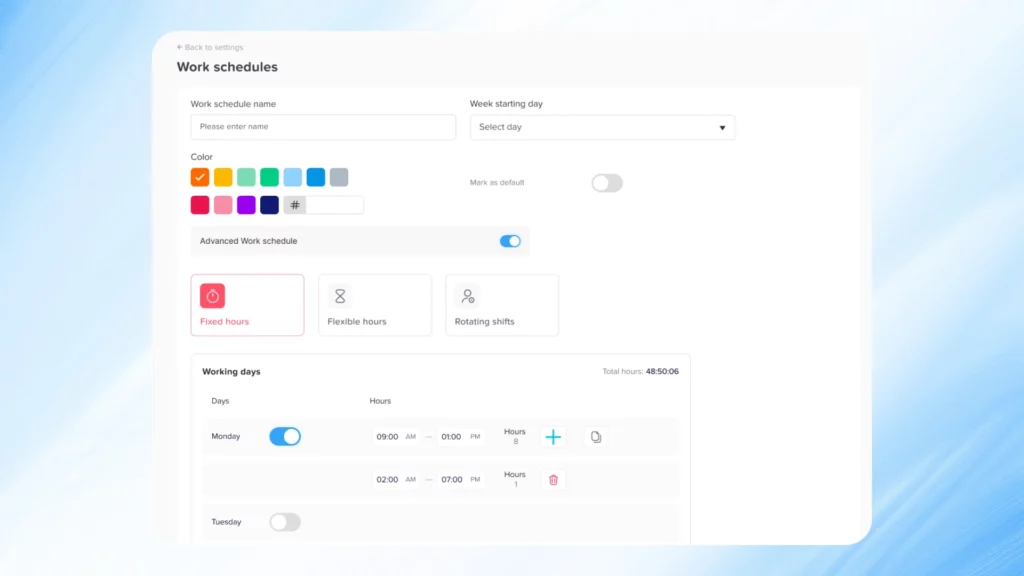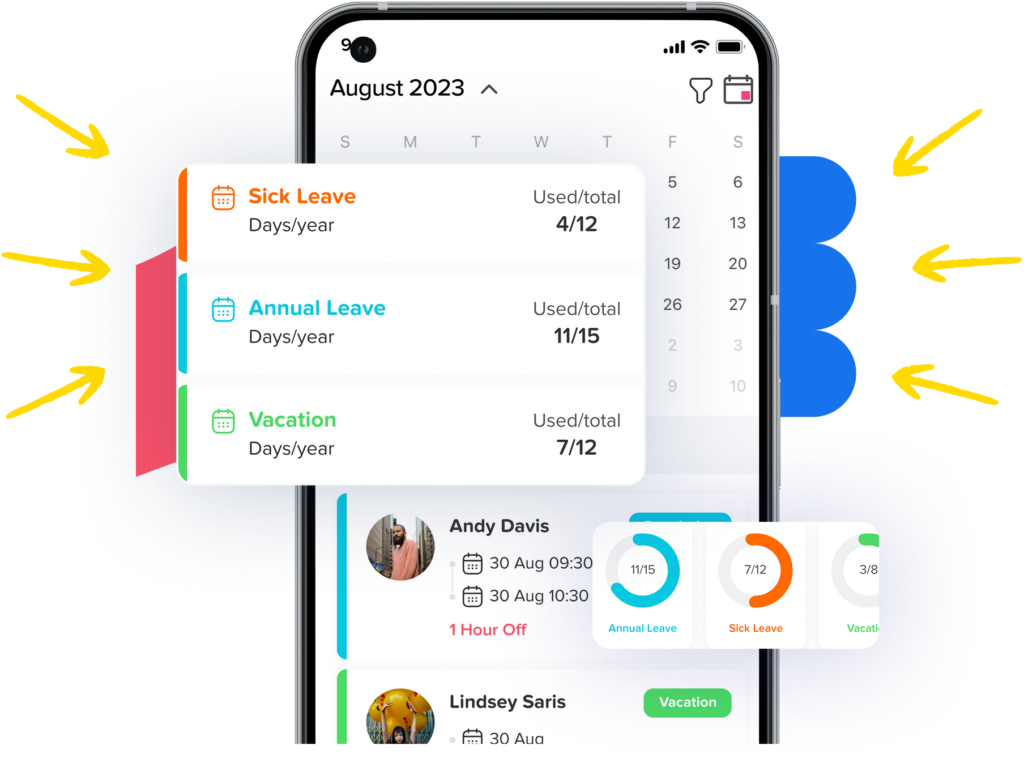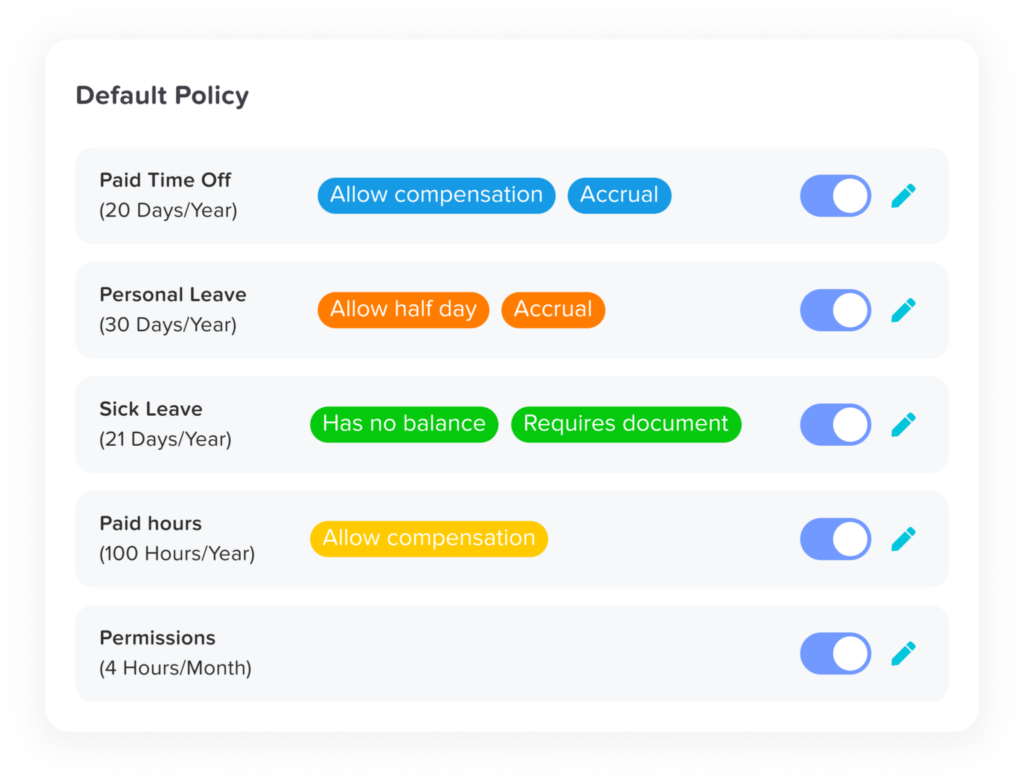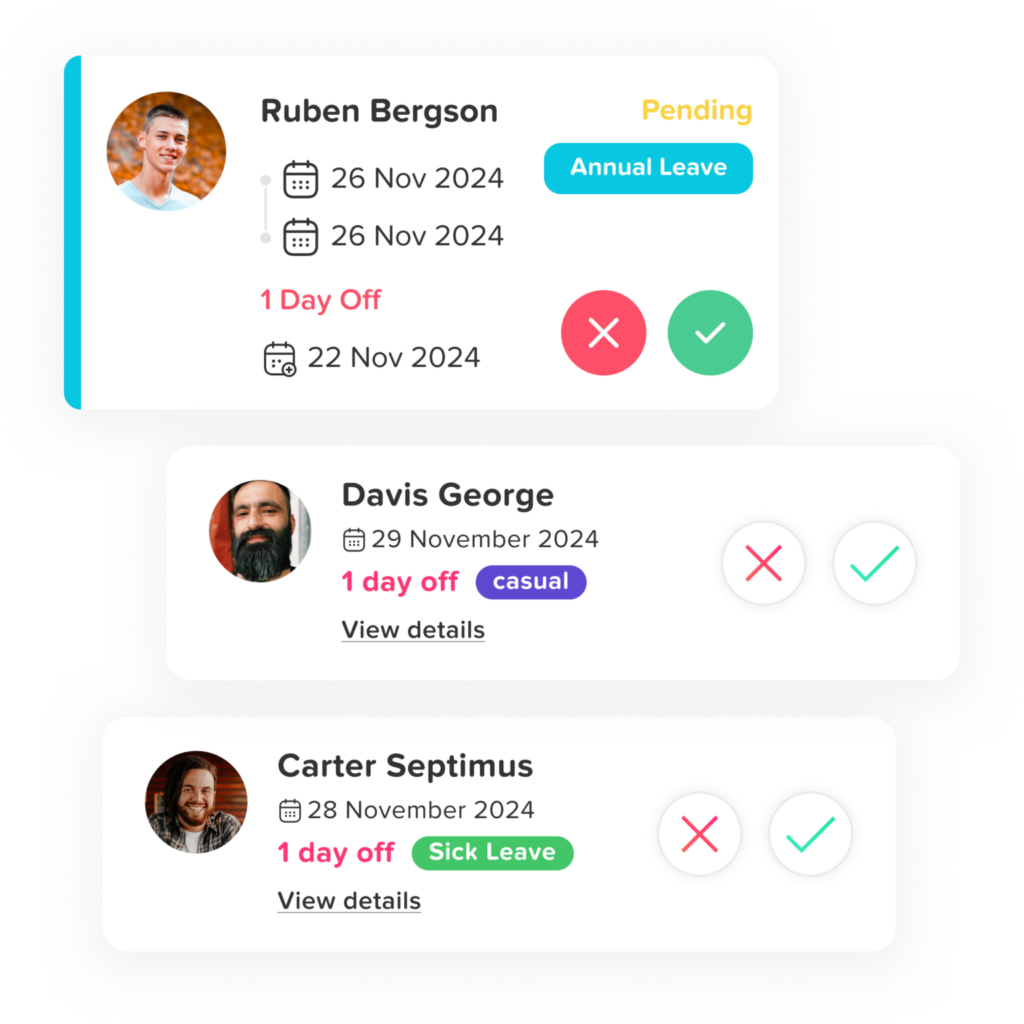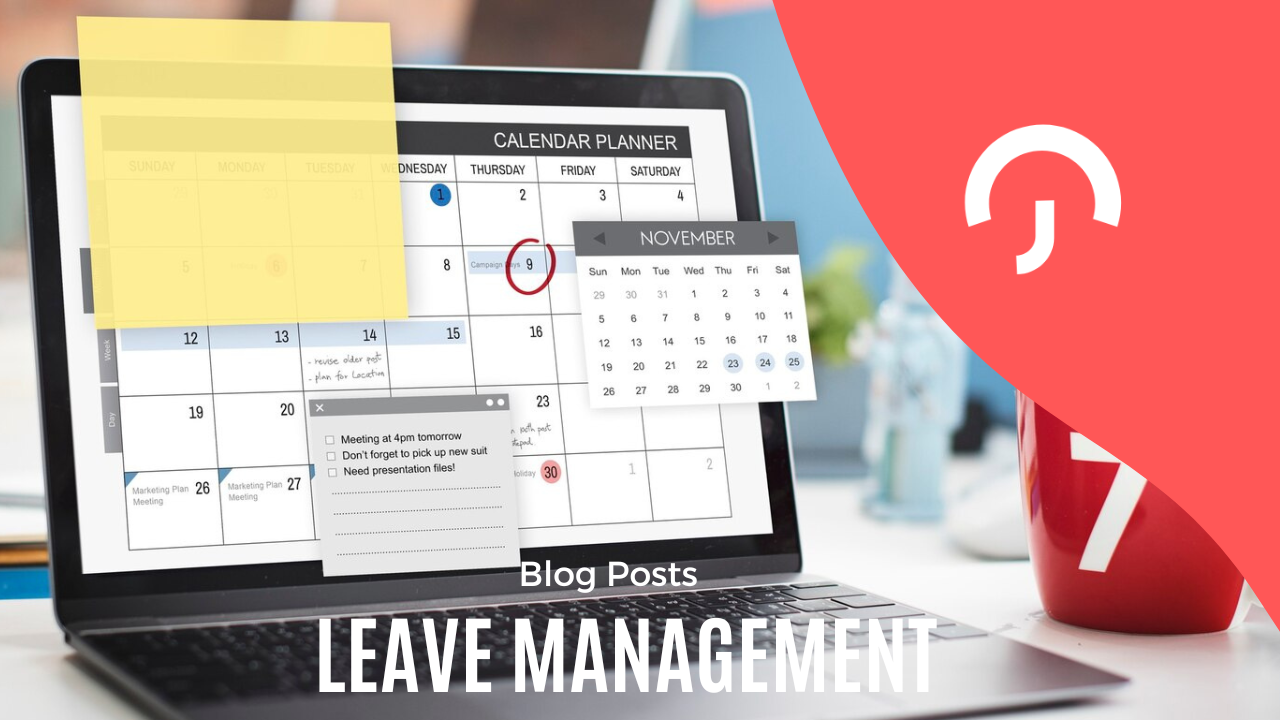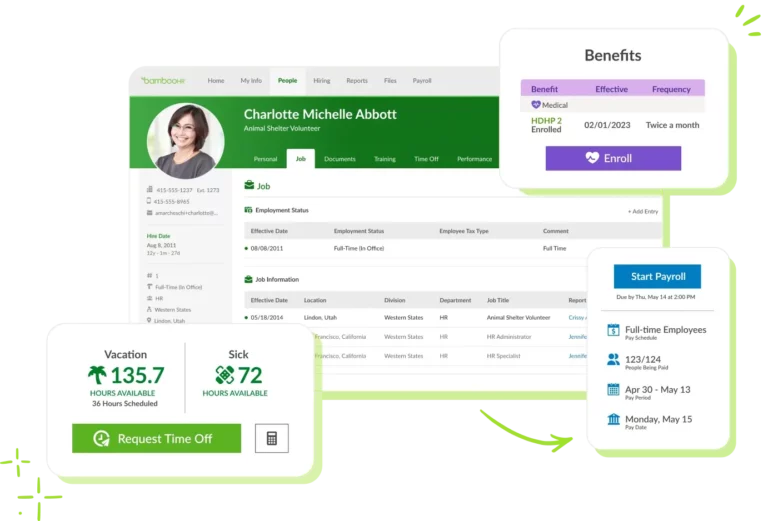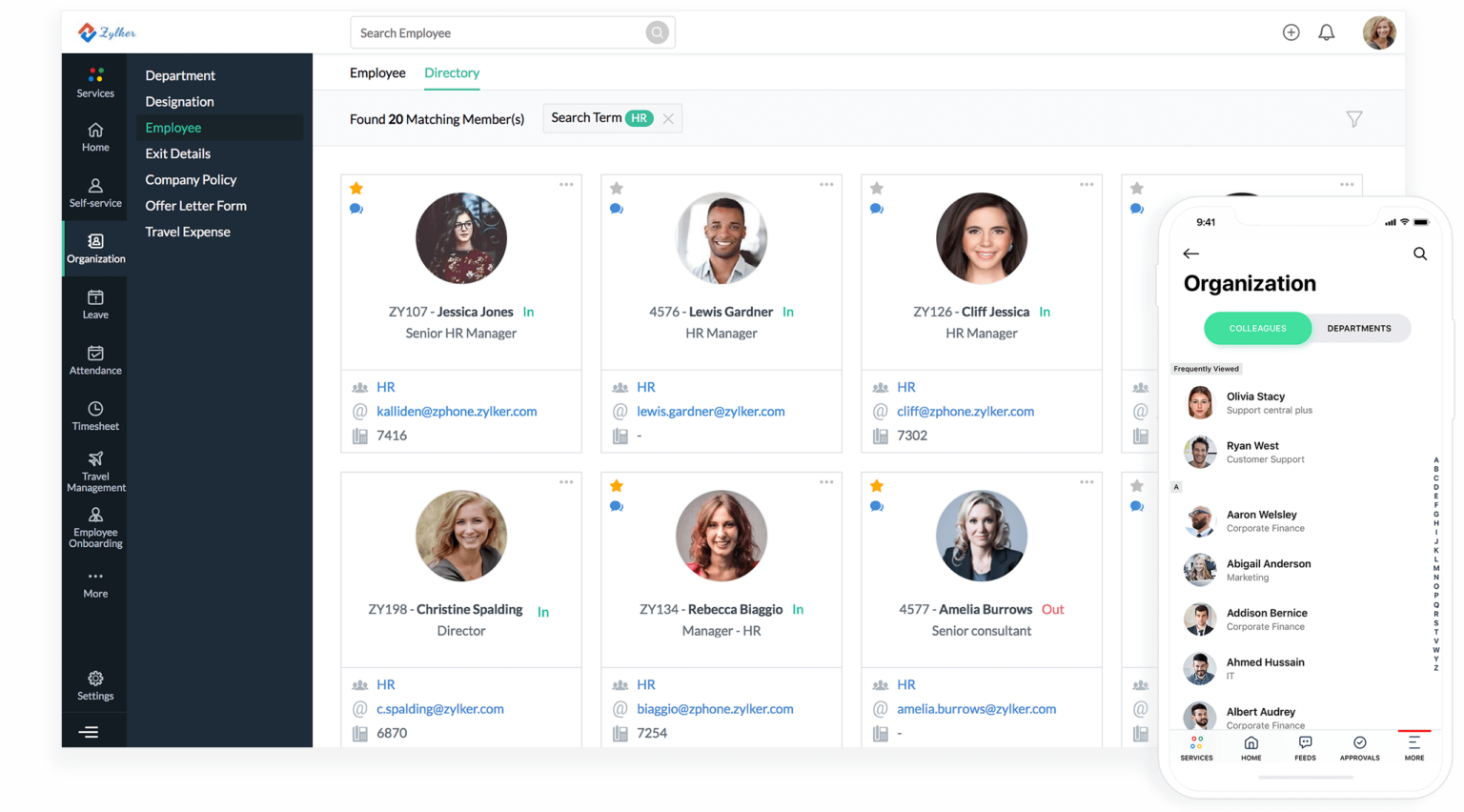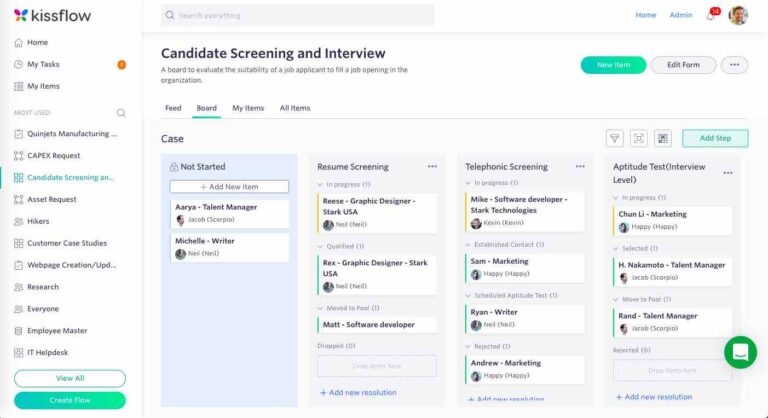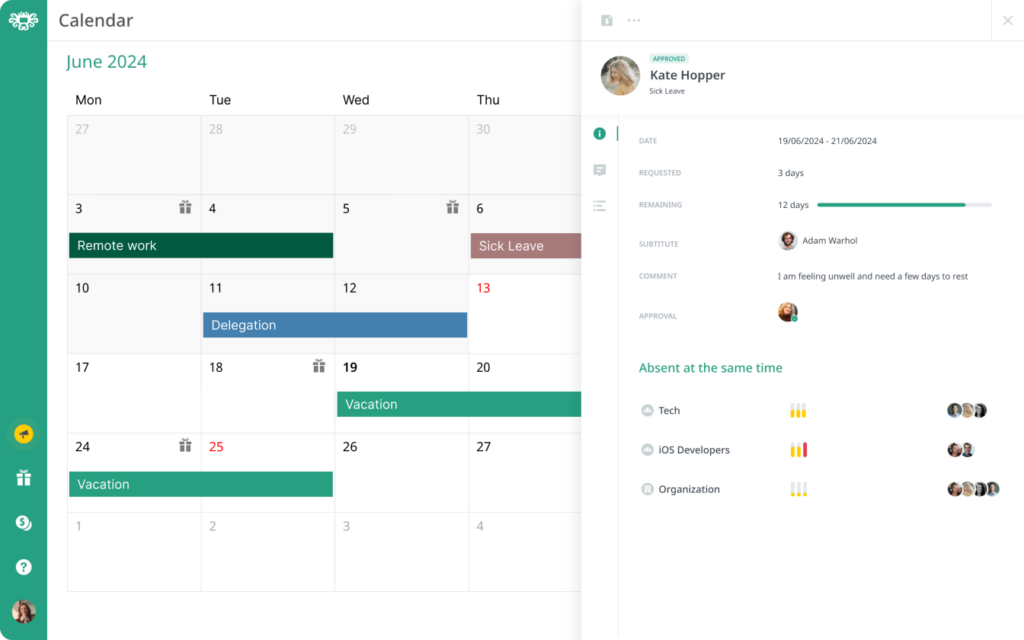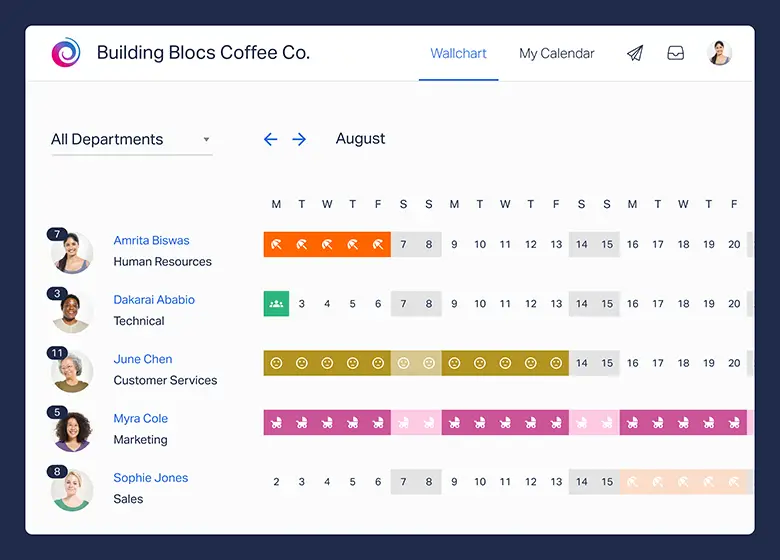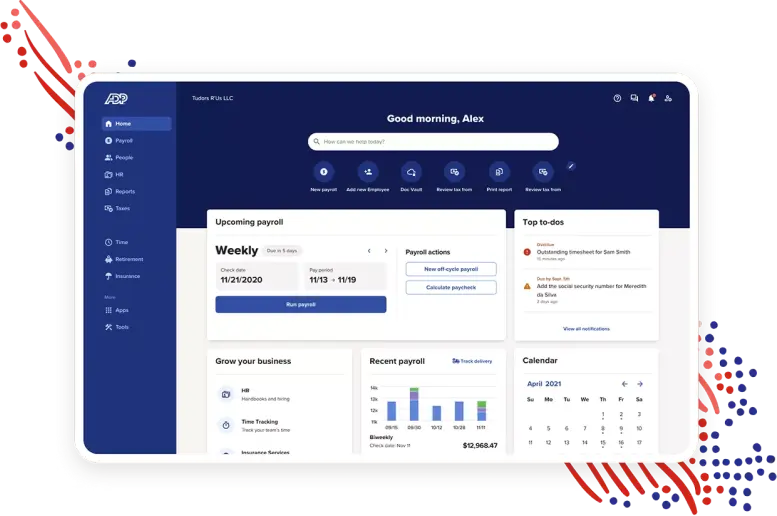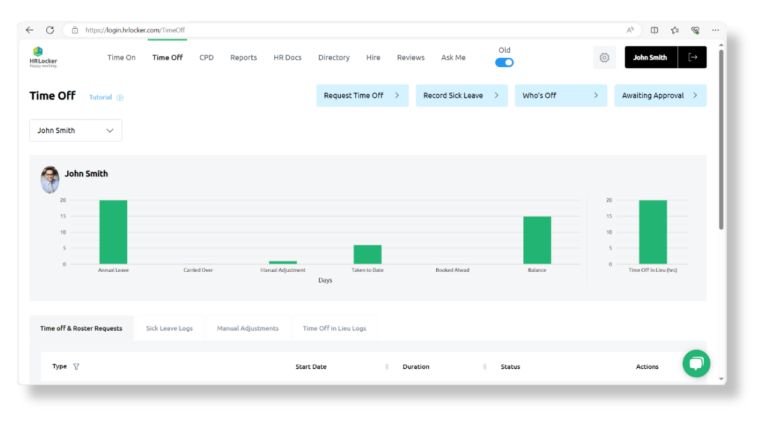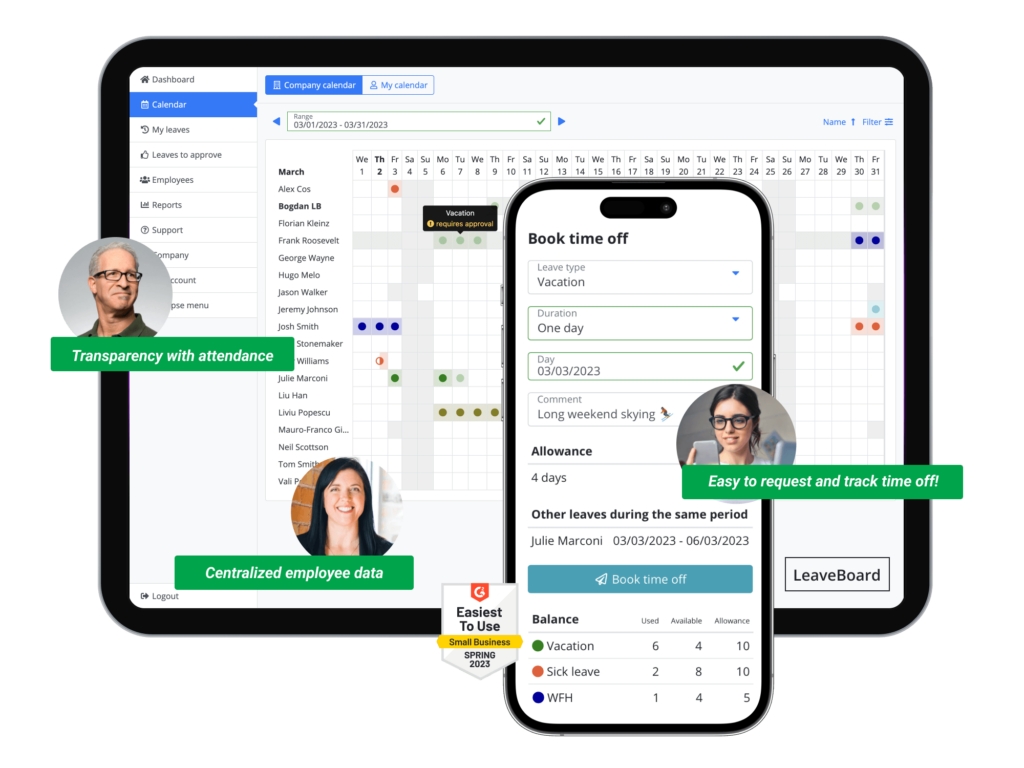Time off management shouldn’t feel like a puzzle. Yet for many teams, especially those growing fast or working remotely, keeping track of who’s out and when can quickly become a challenge. What starts as a simple calendar update can turn into a mix of scattered messages, delayed approvals, and outdated spreadsheets. Before long, managers are unsure who’s available, employees are left waiting for confirmation, and everyone feels a little frustrated.
But it doesn’t have to be this way. With clear communication and the right tools, time off management can be smooth, transparent, and stress-free. When requests are organized in one place, approvals happen faster, and everyone can see the full picture of team availability. That means fewer surprises, better planning, and more trust between employees and managers.
Managing time off should support teamwork, not interrupt it, and when done right, it helps create a healthier, more balanced workplace where everyone feels valued and in control of their time.
In this comprehensive guide, we’ll show you how to simplify your time off management process while staying organized, compliant, and in control.
Why Time Off Management Is More Than Just Scheduling
managing employee leave may seem like nothing more than coordinating schedules. But in reality, time off management touches nearly every area of your business
Employee Wellbeing and Mental Health
Taking time off is crucial for physical, emotional, and mental rejuvenation. When employees don’t feel supported or encouraged to take their leave, burnout becomes a real risk.
Without proper time off management:
Employees may avoid taking time off due to unclear processes or fear of approval delays.
Overworked staff may experience fatigue, stress, or disengagement.
Morale and job satisfaction drop, contributing to higher turnover rates.
Effective time off management:
Encourages a healthy work-life balance.
Ensures employees feel safe taking the time they need.
Shows leadership values wellness and not just output.
Productivity and Business Continuity
When multiple team members take time off without coordination, it can disrupt workflows, cause missed deadlines, and strain the remaining staff.
Poor time off planning can lead to:
Project delays and increased workloads on those covering.
Customer service lapses if coverage isn’t arranged.
Inconsistent resource availability, affecting team momentum.
With a well-managed system:
Teams can plan absences in advance.
Project managers can assign backups or reschedule tasks proactively.
Productivity remains consistent even during peak leave seasons.
Fairness and Transparency Across the Organization
Without standardized systems and clear policies, favoritism or miscommunication can creep in creating resentment among employees.
A lack of fairness can result in:
Perceived inequality in how time off is approved.
Frustration from denied or forgotten requests.
Discontent that spreads across the team or company.
A transparent, well-documented system:
Treats all employees equally, regardless of department or seniority.
Tracks all requests and approvals for audit and review.
Builds trust between teams and leadership.
Legal Compliance and Risk Mitigation
In many regions, time off isn’t just a perk it’s a legal obligation. Labor laws often specify minimum leave entitlements, sick leave rules, carryover policies, and even parental leave durations.
Ignoring legal obligations can lead to:
Fines and penalties from labor boards or regulators.
Employee disputes or lawsuits.
Reputational damage and regulatory scrutiny.
Proactive compliance via a leave management system ensures:
You meet country-specific laws and union agreements.
Accruals, carryovers, and balances are calculated correctly.
Records are easily accessible in the event of an audit.
Data-Driven Workforce Planning
When you treat time off management as a strategic data source not just a calendar you unlock powerful insights.
Poor visibility limits your ability to:
Forecast team availability during high-demand periods.
Identify departments with burnout risks due to unused leave.
Track sick leave trends that may reflect health issues or low morale.
Strategic time off management tools allow you to:
Analyze trends by employee, department, or location.
Identify peak leave periods and staff accordingly.
Make smarter budgeting and hiring decisions.
Remote and Hybrid Workforce Enablement
As teams become more distributed, tracking who’s available and where they are working from has become more complex.
Without a structured time off system:
Remote employees may be unintentionally left out of planning.
Teams in different time zones may struggle with visibility.
Managers might not be aware of all leave plans.
Modern leave management supports:
Mobile access for remote workers.
Global policy enforcement for multinational teams.
Seamless communication of leave schedules across virtual teams.
Company Culture and Employer Branding
How you handle time off says a lot about your company’s values. Do you reward hustle culture at the cost of balance? Or do you build a workplace where taking a break is not only accepted but encouraged?
Poor time off culture leads to:
Employees feeling guilty for taking vacation.
Burnout cycles becoming normalized.
Low reviews on employer rating platforms (like Glassdoor).
Strong time off culture can:
Enhance your employer brand.
Attract talent that values flexibility and wellness.
Retain employees longer due to increased satisfaction.
7 Ways to Simplify Time Off Management Without Losing Track
Centralize the Entire Process
Managing leave across multiple channels email, spreadsheets, Slack messages invites chaos. It’s easy for requests to be overlooked, misfiled, or lost entirely. Plus, employees don’t always know where to go to submit or track their requests.
What to do:
Implement a centralized time off management platform that serves as a single source of truth for all leave-related activity. A tool like Day Off brings everything together in one intuitive interface, where employees can submit requests, managers can approve them, and HR can generate reports effortlessly.
Benefits:
No more lost or miscommunicated requests
Easier to enforce policies and maintain consistency
Saves time for both HR and team leads
Improves employee confidence and satisfaction
Automate Workflows to Save Time
Manually approving every request and updating calendars introduces unnecessary delays and errors especially for large or distributed teams. Automation reduces admin burden and ensures real-time accuracy.
What to do:
Set up automatic notifications for when a request is submitted or approved. Configure your system to flag overlapping leaves, pre-fill employee data, and update calendars instantly after approval.
Benefits:
Faster approvals = happier employees
Reduces bottlenecks in busy periods
Ensures the right people are notified automatically
Eliminates human error from manual entries
Example:
Instead of HR having to remind a manager about a pending request, an automated tool sends them a notification and allows them to approve with one click on desktop or mobile.
Define and Communicate Clear Policies
Without a clear PTO policy, employees may feel uncertain about how much time they can take, how it’s earned, and how to properly request it. This leads to inconsistent usage and frustration.
What to do:
Develop a well-defined time off policy that includes:
Leave types (PTO, sick leave, public holidays, parental leave, etc.)
How time off is accrued (monthly, yearly, per project)
Carryover limits and expiration rules
Request notice periods (e.g., 2 weeks for vacations)
Approval workflows and expected response times
Share it across multiple channels employee handbooks, onboarding sessions, internal websites, and within your leave management platform.
Benefits:
Eliminates confusion and improves compliance
Sets fair expectations for all employees
Strengthens company culture through transparency
Reduces HR queries and back-and-forth
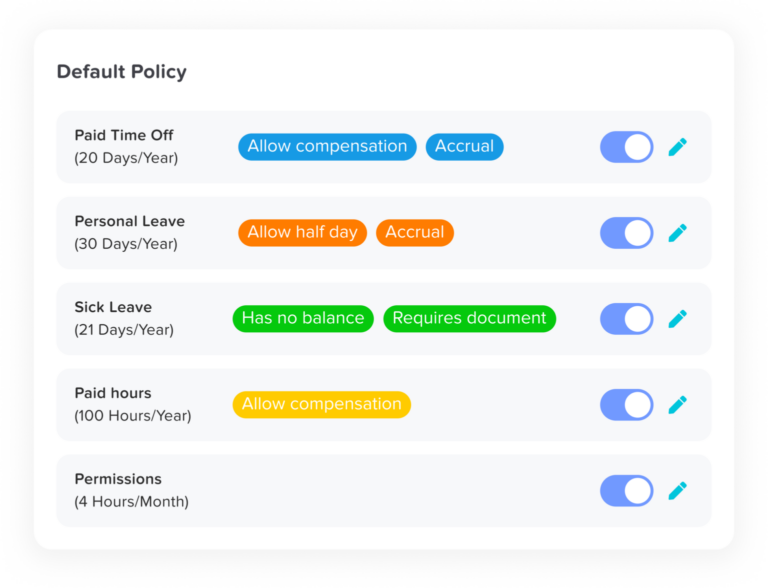
Offer Self-Service Dashboards
Relying on HR for every leave balance inquiry or status update is inefficient. Employees value autonomy and quick access to information.
What to do:
Use a time off system that provides each employee with a personalized dashboard where they can:
Check current leave balances
See past and upcoming leaves
Track request statuses (pending, approved, declined)
Make or cancel requests without emailing HR
Benefits:
Reduces administrative work for HR
Empowers employees with transparency
Improves overall user experience and adoption
Speeds up routine processes
Pro Tip:
With Day Off, employees can access this dashboard from their phones, making it easy to manage time off on the go.
Integrate With Team Calendars and Tools
If leave records live in one system and work calendars in another, scheduling meetings or planning projects becomes difficult. Teams need visibility to avoid conflicts and plan coverage.
What to do:
Choose a leave management platform that integrates with:
Google Calendar or Outlook
Slack or Microsoft Teams
This ensures approved leave automatically appears in shared calendars, helping everyone stay aligned.
Benefits:
Easier team planning and coordination
Prevents double-booking during absences
Reduces miscommunication about availability
Saves time with fewer manual updates
Enable Mobile Access for On-the-Go Teams
In an age of remote and flexible work, many employees aren’t tied to a desk. They need the ability to manage their time off wherever they are whether on a job site, at home, or traveling.
What to do:
Opt for a mobile-optimized solution like Day Off’s iOS and Android apps, which allow users to:
Request or cancel leave anytime
View upcoming holidays and team absences
Receive push notifications for approvals or reminders
Approve time off in seconds from a smartphone
Benefits:
Ensures full adoption in mobile-heavy teams
Improves responsiveness and real-time coordination
Allows HR and managers to stay connected on the go
Real-world example:
A remote developer receives a last-minute trip opportunity. Instead of emailing HR, they open the Day Off app, submit their leave request in 30 seconds, and their manager is instantly notified.
Use Data & Reporting to Improve Planning
You can’t improve what you don’t measure. Data helps identify trends, anticipate issues, and adjust policies to better serve both the business and your people.
What to do:
Leverage reporting tools to analyze:
Average time off usage per employee or department
Seasonal trends in PTO requests
Sick day frequency (for early health/wellness interventions)
Accrued vs. used balances
Upcoming gaps in staffing coverage
Use these insights to prepare for high-demand periods, redistribute workloads, or revise PTO policies based on usage patterns.
Benefits:
Informed decisions about staffing and resources
Early detection of burnout or absenteeism issues
Better budget and payroll planning
Ensures you’re compliant with local labor laws
FAQs
What is time off management, and why is it important?
Time off management is the process of tracking, approving, and recording employee leave, including paid time off (PTO), vacation, sick days, public holidays, and other absences. It’s important because it ensures fairness, legal compliance, accurate payroll, and smooth day-to-day operations. With clear systems in place, employees feel supported while managers can plan workloads effectively.
Can small businesses benefit from a time off management system?
Absolutely. Small teams often feel the impact most when even one person is away. A time off management tool helps reduce confusion, avoid scheduling conflicts, and create organized systems early on, without the need for a large HR department. It’s a simple way for growing businesses to stay efficient and professional.
What features should I look for in a time off management tool?
The best tools offer features that make leave tracking easy and transparent, such as:
Centralized request and approval workflows
Real-time leave balance tracking
Shared team calendars
Custom policy settings (rules, accruals, carryovers)
Mobile access for flexibility
Integration with calendars, email, and payroll systems
Reporting and analytics for better insights
Day Off includes all of these features in a simple, user-friendly interface that works for teams of any size.
How can I encourage employees to actually use their time off?
Start by creating a culture where taking time off is encouraged, not frowned upon. Make sure:
Your PTO policy is clear and easy to find
Managers lead by example and take time off too
Employees feel confident their work will be covered
The leave request process is quick and simple
Remind your team that rest and recovery lead to better creativity, focus, and long-term productivity.
What’s the difference between PTO, vacation, and sick leave?
These terms are related but slightly different:
PTO (Paid Time Off): A general pool of paid leave that can be used for vacation, illness, or personal matters.
Vacation Leave: Paid days off specifically for rest or travel.
Sick Leave: Time off to recover from illness or attend medical appointments (sometimes legally required).
Some companies bundle all types under one PTO policy, while others separate them based on local laws or company preferences.
How do I handle overlapping time off requests?
A good time off management system helps prevent scheduling issues by:
Flagging overlapping requests automatically
Showing who’s already off on specific dates
Allowing managers to set approval rules or tiers (e.g., supervisor, HR)
Giving teams visibility so they can plan coverage in advance
This makes it easier to handle conflicts fairly and maintain smooth operations.
Can I manage time off across multiple locations or time zones?
Yes! Modern tools like Day Off make it simple to coordinate global or remote teams by:
Setting local holidays and policies for each location
Displaying leave calendars in employees’ time zones
Providing mobile and web access for everyone
This ensures your entire team stays in sync, no matter where they are.
What are common mistakes companies make in time off management?
Some common pitfalls include:
Relying on manual tracking (emails or spreadsheets)
Lacking a clear, written time off policy
Delayed or inconsistent approvals
Ignoring local labor law requirements
Not analyzing time off data for patterns or issues
Avoiding these mistakes starts with the right system and clear communication from leadership.
How do I transition from spreadsheets to an automated system?
Making the switch is easier than it seems:
Choose a platform (like Day Off) that fits your team’s size and needs.
Export your existing data into CSV or Excel.
Import employee details, leave balances, and history into the new system.
Host a quick training session to walk your team through it.
Retire your manual process and communicate the change clearly.
Most tools provide onboarding support to make setup smooth and stress-free.
Is a mobile app really necessary for time off management?
Yes, especially for remote, hybrid, or field-based teams. A mobile app allows employees and managers to:
Submit and approve requests instantly
Receive real-time updates and notifications
Check balances anytime, anywhere
It adds convenience, encourages engagement, and keeps everyone connected, no matter where work happens.
Conclusion
Time off management is more than just keeping track of absences, it’s about creating a healthy, respectful, and organized workplace. When employees know their time away is handled fairly and transparently, they feel valued and supported. That trust leads to higher morale, better communication, and stronger teamwork across the entire company.
A well structured time off system also helps managers plan, avoid confusion, and keep projects running smoothly. It saves time, reduces stress, and gives everyone a clear view of who’s available and when. Most importantly, it reinforces the idea that rest is not a reward; it’s a vital part of doing great work.
With a tool like Day Off, managing leave becomes effortless and stress-free. Everything from requests to approvals to records is handled in one place, helping teams stay connected and productive, even when people are out. By embracing smart, transparent time off management, organizations can build a culture where balance, well-being, and performance go hand in hand.










